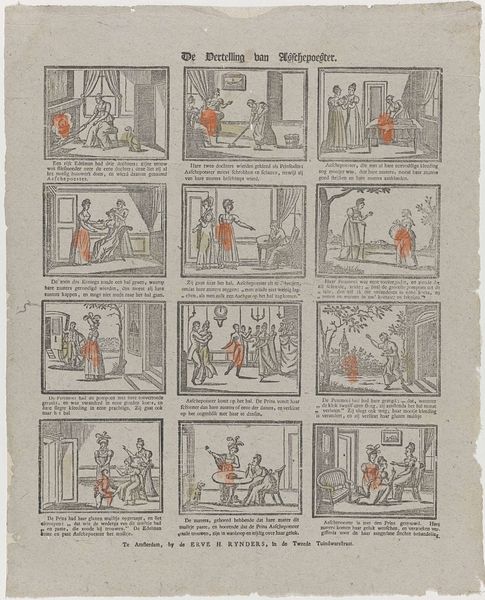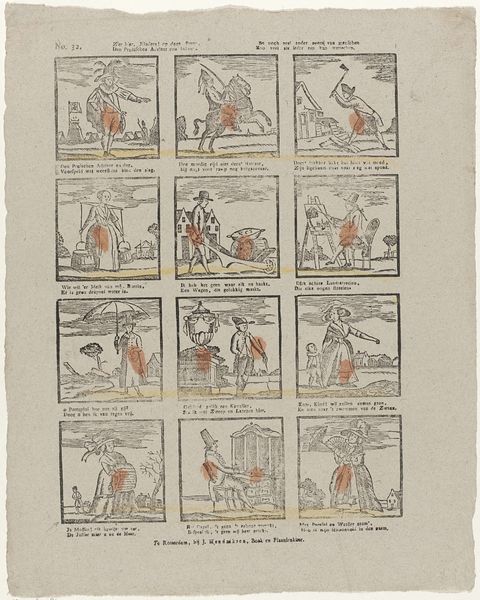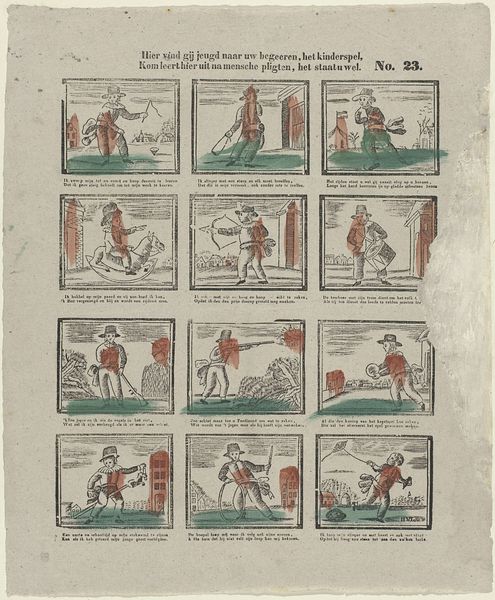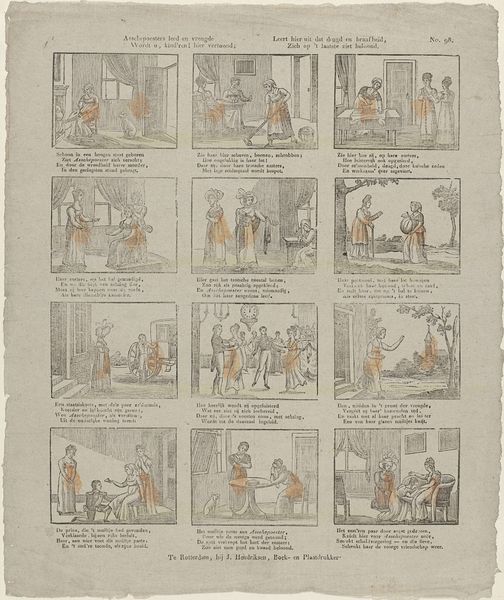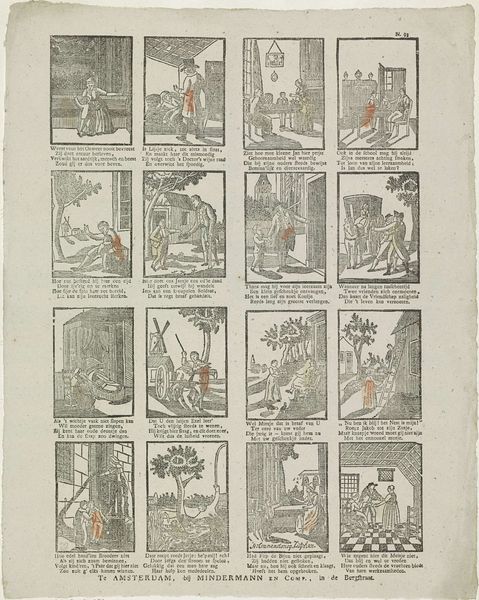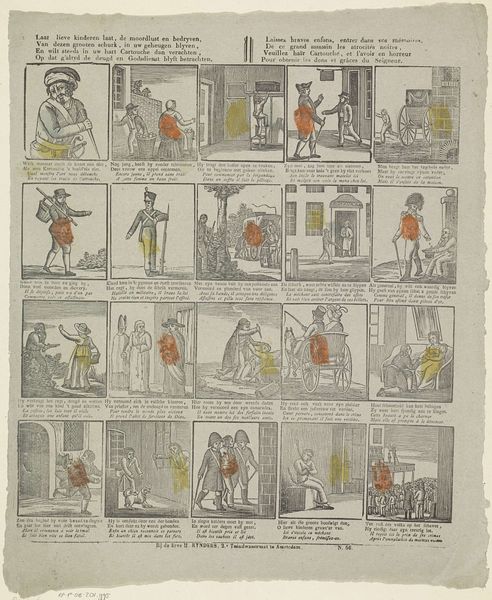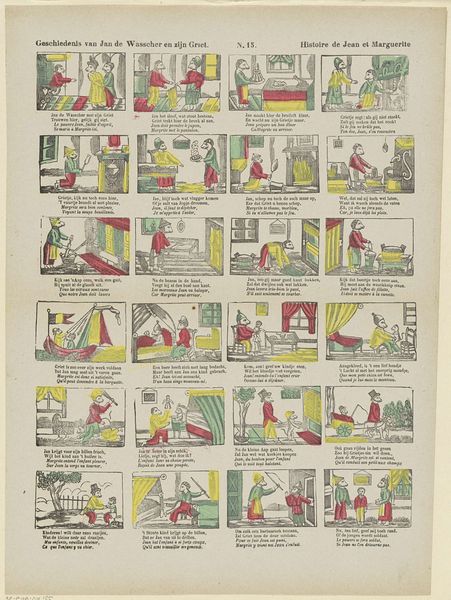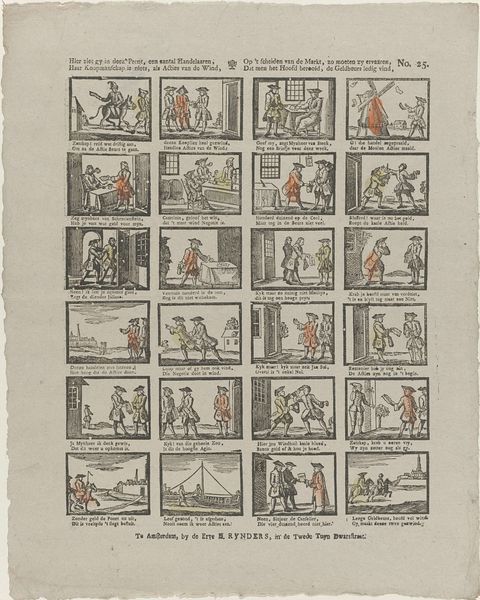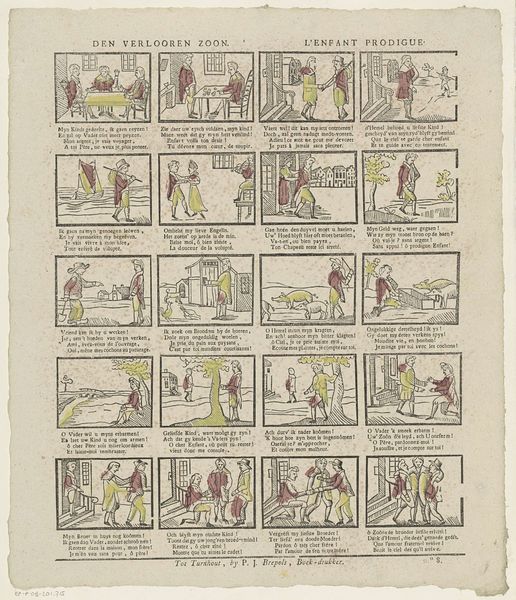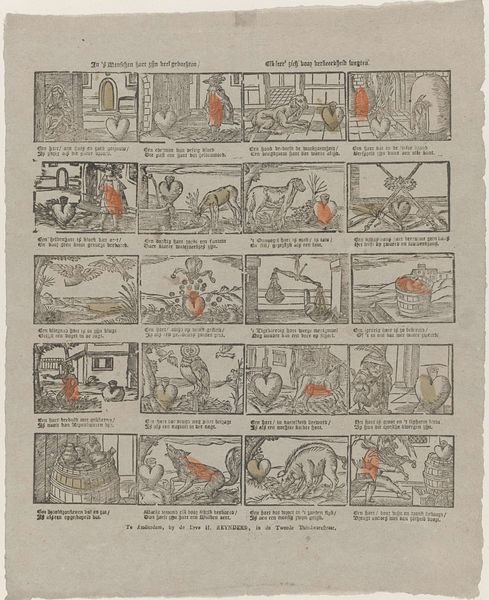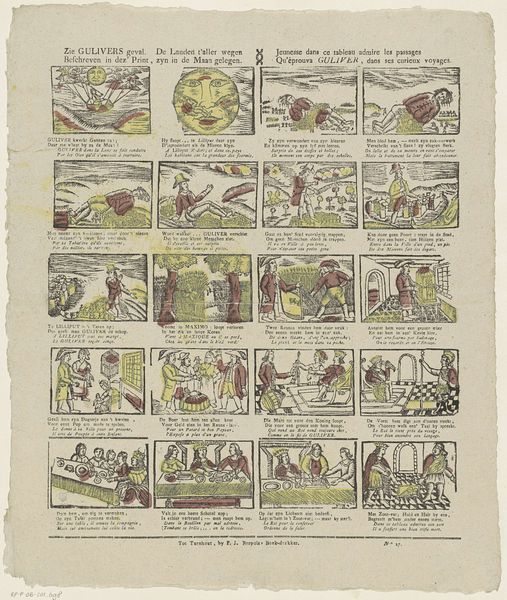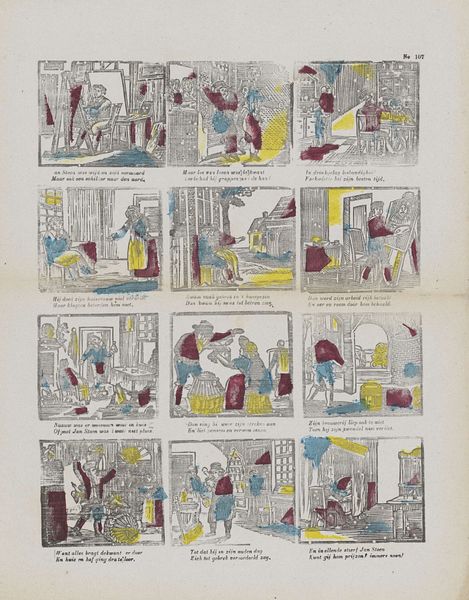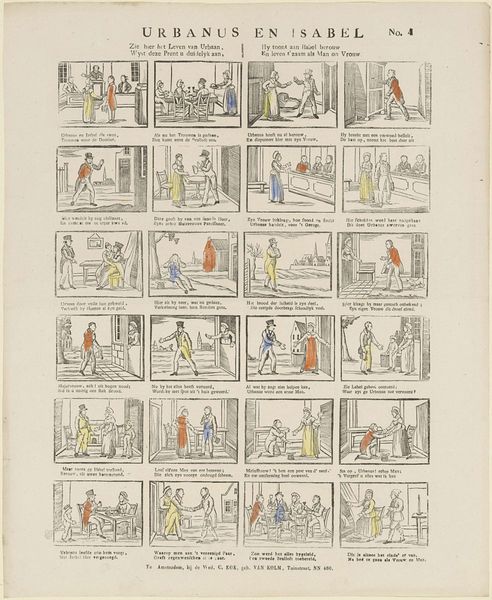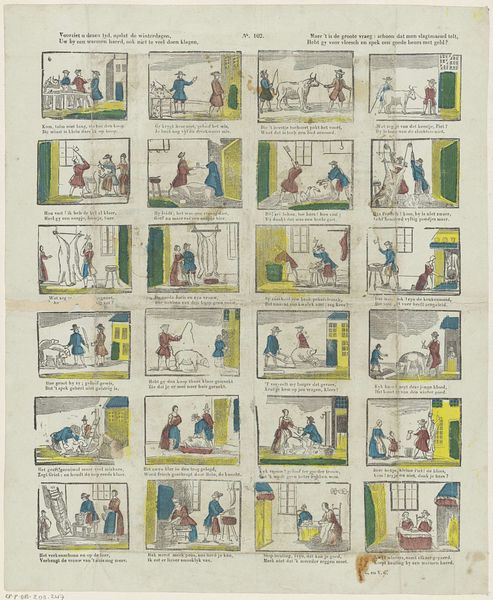
Gij, lieve Kind'ren kunt uit Duimpjes voorbeeld leeren, Dat moed en overleg 't gevaar kan overheeren 1781 - 1828
0:00
0:00
drawing, print, paper, ink
#
drawing
#
aged paper
#
quirky sketch
#
narrative-art
#
dutch-golden-age
# print
#
sketch book
#
paper
#
personal sketchbook
#
ink
#
sketchwork
#
pen-ink sketch
#
pen work
#
sketchbook drawing
#
genre-painting
#
storyboard and sketchbook work
#
sketchbook art
Dimensions: height 422 mm, width 334 mm
Copyright: Rijks Museum: Open Domain
Editor: This print, titled "Gij, lieve Kind'ren kunt uit Duimpjes voorbeeld leeren, Dat moed en overleg 't gevaar kan overheeren," dating back to somewhere between 1781 and 1828, by Jan Hendriksen… it's laid out like a comic strip. It gives me the impression of being a very old storybook. What stands out to you? Curator: The layout certainly guides our reading, doesn’t it? These sequential images depicting scenes from, I presume, a moral tale, push us to think about how narratives are constructed and, importantly, what societal values are being promoted. The use of text integrated within each frame also speaks to a broader accessibility, a deliberate attempt to shape young minds and propagate specific ideologies of the time. What lessons about courage and resourcefulness do you think Hendriksen tries to convey to their audience? Editor: It seems to celebrate self-reliance, maybe even a touch of disobedience, but I'm also aware that these depictions come from a very different cultural context. So, were these "lessons" actually liberating for everyone, or did they also reinforce existing power structures? Curator: Precisely. Examining the composition further, who is included, who is excluded, and how are these figures presented? For example, how does the depiction of family roles potentially solidify certain patriarchal norms, whilst simultaneously creating room for childhood heroism? And how does the imagery connect to ideas about colonialism or nationalism, in that time period? Editor: That’s true. Looking closer, the characters seem trapped within traditional roles. It is an interesting intersection; some empowering, others quite limiting. It certainly prompts one to investigate Dutch society and its values at the end of the 18th century. Curator: Exactly! The personal becomes political, especially for youth. Through the artistic choices that Jan Hendriksen takes, we gain access into society's value and societal constraints in one snapshot.
Comments
No comments
Be the first to comment and join the conversation on the ultimate creative platform.
